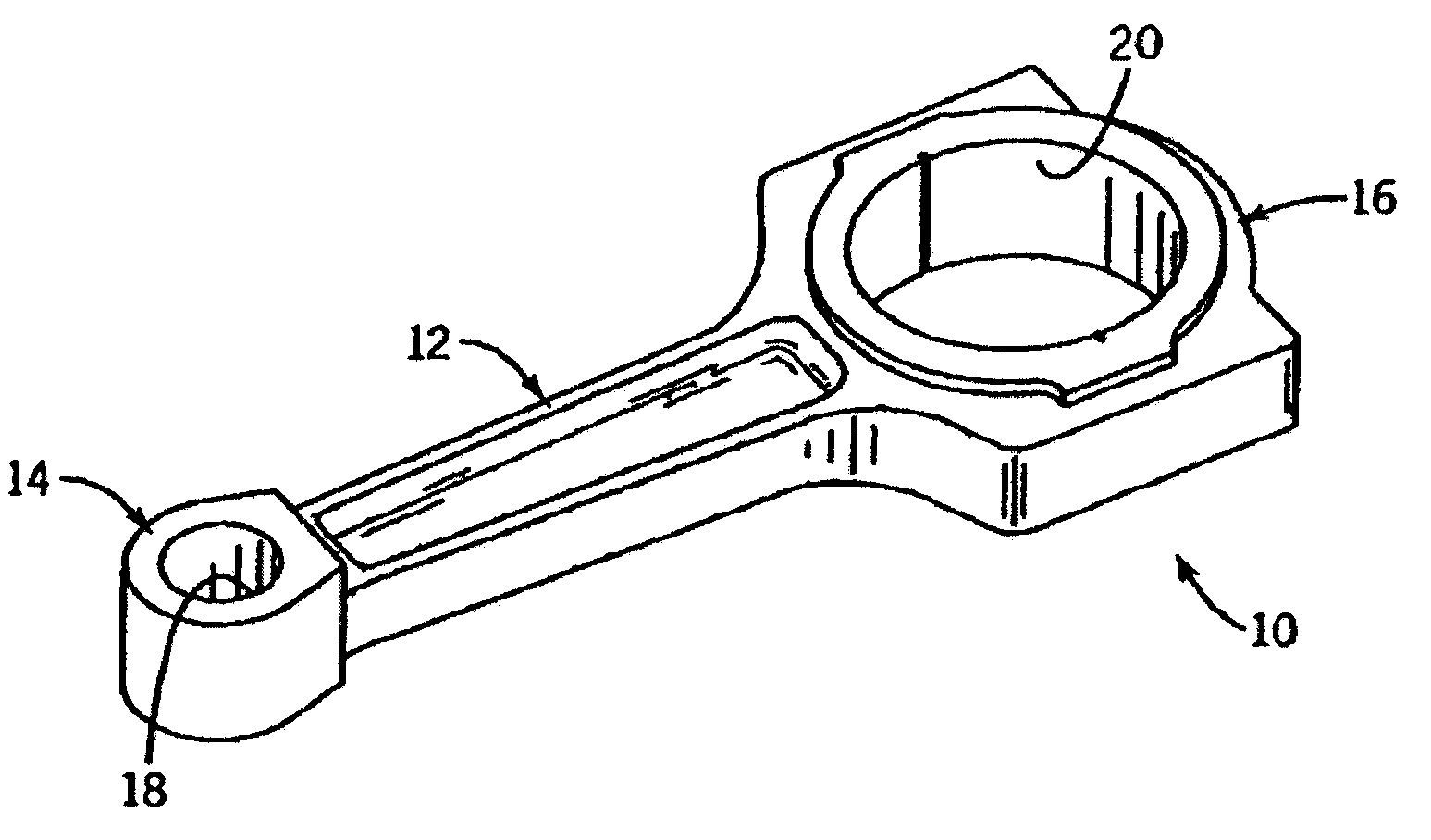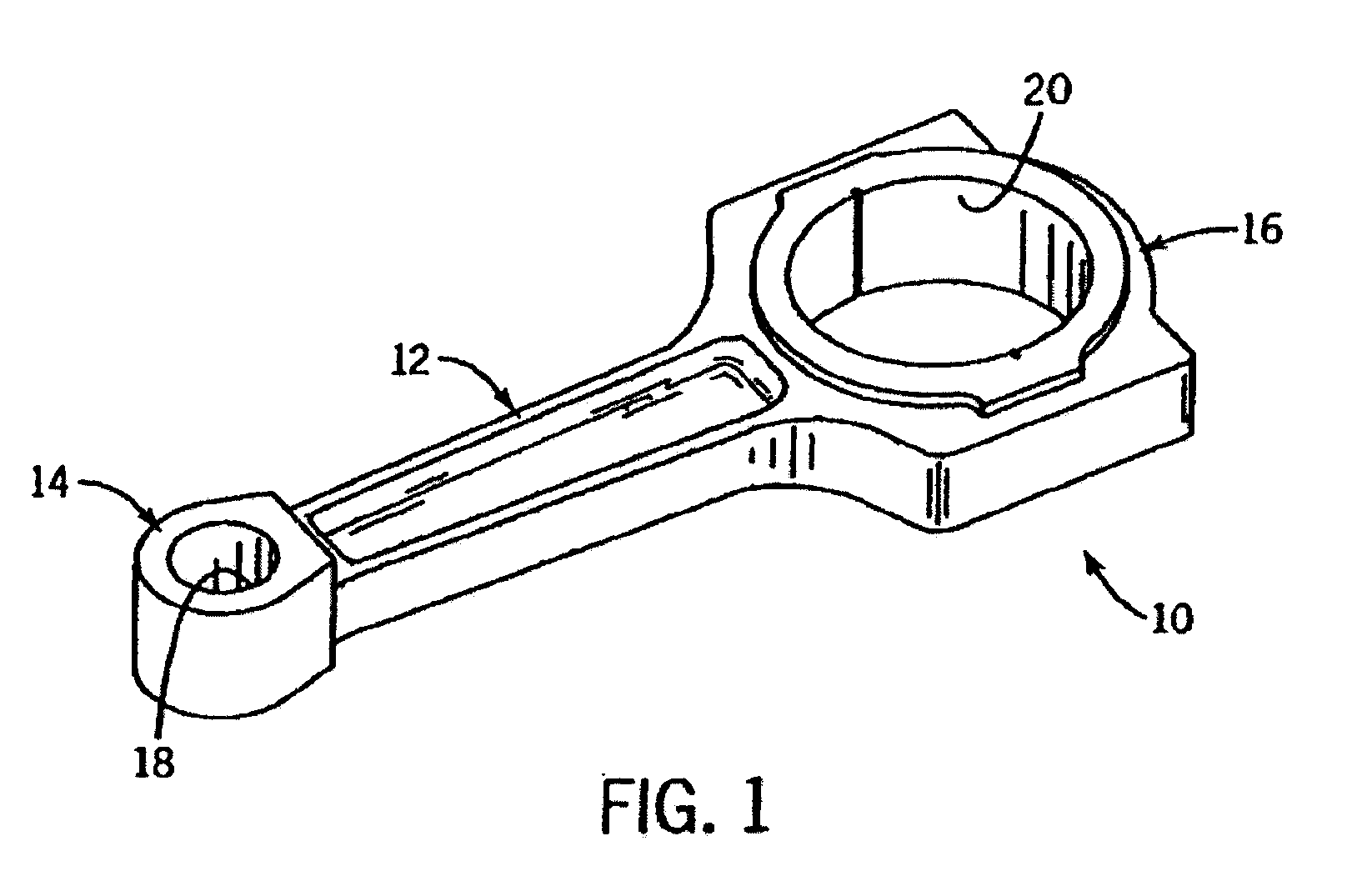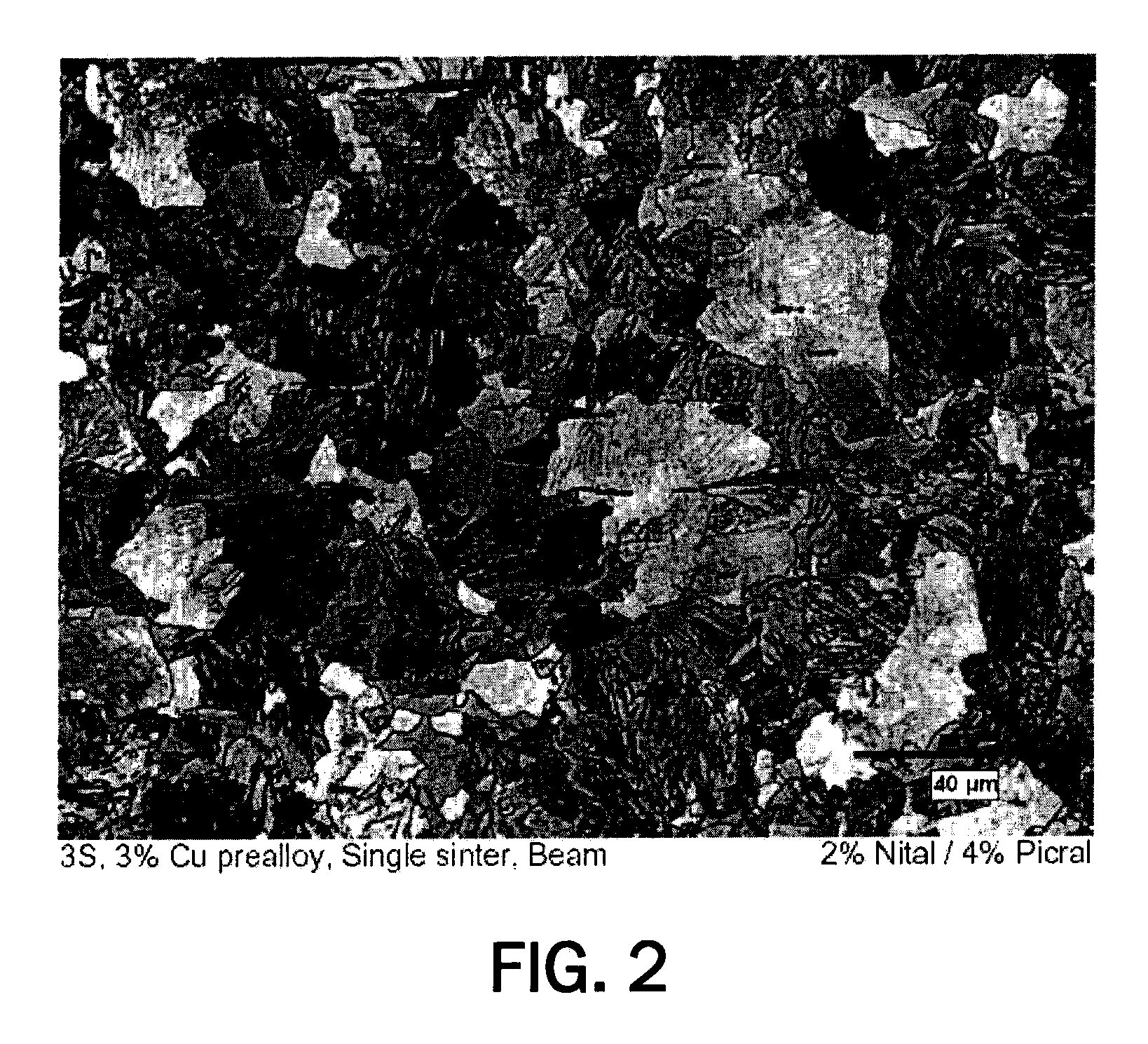Prealloyed copper powder forged connecting rod
a technology of connecting rods and powdered copper, which is applied in the direction of engines, mechanical equipment, machines/engines, etc., can solve the problems of reducing the dimensions of the connecting rod, and reducing the number of pores in the par
- Summary
- Abstract
- Description
- Claims
- Application Information
AI Technical Summary
Benefits of technology
Problems solved by technology
Method used
Image
Examples
Embodiment Construction
[0025]Referring now to FIG. 1, a connecting rod 10 is shown. The connecting rod 10 has a central beam section12 that is integrally connected to a piston end 14 and a crankshaft end 16. The piston end 14 has a small hole 18 that can be connected to the wrist pin of a piston. The crankshaft end 18 has a large hole 20 that can be connected to the crankshaft of an engine. When an engine is in use, the combustion cycle reciprocating the piston in an engine cylinder results in the connecting rod cycling the location of the crankshaft end 16.
[0026]The connecting rod 10 is formed by a powder metal process. The process typically includes the steps of compaction, sintering, and powder forging.
[0027]The first step in the process is the compaction step. During the compaction step, the powder metal material is compacted into a green compact that is slightly larger than the final desired connecting rod. Compaction is typically performed by a press that has a feedshoe containing the powder metal a...
PUM
| Property | Measurement | Unit |
|---|---|---|
| length | aaaaa | aaaaa |
| grain size | aaaaa | aaaaa |
| temperature | aaaaa | aaaaa |
Abstract
Description
Claims
Application Information
 Login to View More
Login to View More - R&D
- Intellectual Property
- Life Sciences
- Materials
- Tech Scout
- Unparalleled Data Quality
- Higher Quality Content
- 60% Fewer Hallucinations
Browse by: Latest US Patents, China's latest patents, Technical Efficacy Thesaurus, Application Domain, Technology Topic, Popular Technical Reports.
© 2025 PatSnap. All rights reserved.Legal|Privacy policy|Modern Slavery Act Transparency Statement|Sitemap|About US| Contact US: help@patsnap.com



